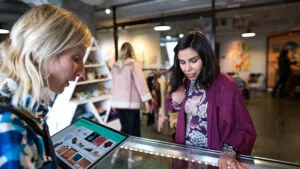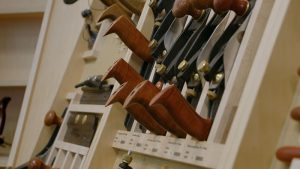
2016: The year of unified commerce

Both the pace and nature of change within retail is progressing at a velocity unlike anything we have seen before. In our always on, want it now society, retailers are being challenged to meet the needs of today’s shoppers by being equipped to engage and fulfill at the consumer’s preferential point of purchase.
This need to interact with, and provide value-added experiences for customers across their entire shopping journey – online, in-store and mobile – is driving the need to think differently about a retailer’s channels and their interaction points with customers.
To be truly successful and competitive, retailers are recognizing the need to achieve Unified Commerce, which moves a step beyond omnichannel retailing and includes the technology-enabled retail functions (both inside and outside the company) to serve the consumer where, when and how they desire—on devices of their choosing, at times of their choosing, and of course, locations of their choosing; and to make life REALLY interesting, these can all change and migrate inside a single transaction.
In fact, unified commerce is now the number one priority for retailers and will drive the most technology spend in 2016, according to new research by global research firm IHL Group. In a recent webinar, IHL’s President Greg Buzek shared that 69 percent of worldwide software spending in 2016 will be centered on unified commerce-related technology initiatives, representing an astounding $30 billion USD.
Included in this are investments in things like store communications infrastructure, updating the point of sale and an increased commitment to mobile POS, and basing it on a central enterprise order management system and a centralized merchandise & distribution system and strategy. These are all key areas to achieving unified commerce, delivering that seamless experience to customers, and driving profitability.
These investment areas are definitely priorities echoed by our Microsoft retail customers, and we are seeing forward-thinking and innovative retailers replacing disparate systems that have overlapping commerce technologies, as they can no longer afford the expense and time taken to keep up with the rate of change within these systems.
Tomorrow’s successful retailers will be combining the best of physical and digital assets to create that modern store experience and seamless shopping journey for their consumers regardless of the way they wish to shop, and the physical experiential store will be the center point of that.
To learn more about the key drivers for unified commerce and what you should be doing to be successful, you can listen to the full webinar here.
And if you’re heading to the NRF Big Show 2016, please come visit us in Microsoft Booth #2803 or schedule a meeting to talk more about creating modern shopping experiences for your customers.
I look forward to what’s to come in 2016!
LinkedIn: Duncan Taylor
Twitter: @DeeTee123




